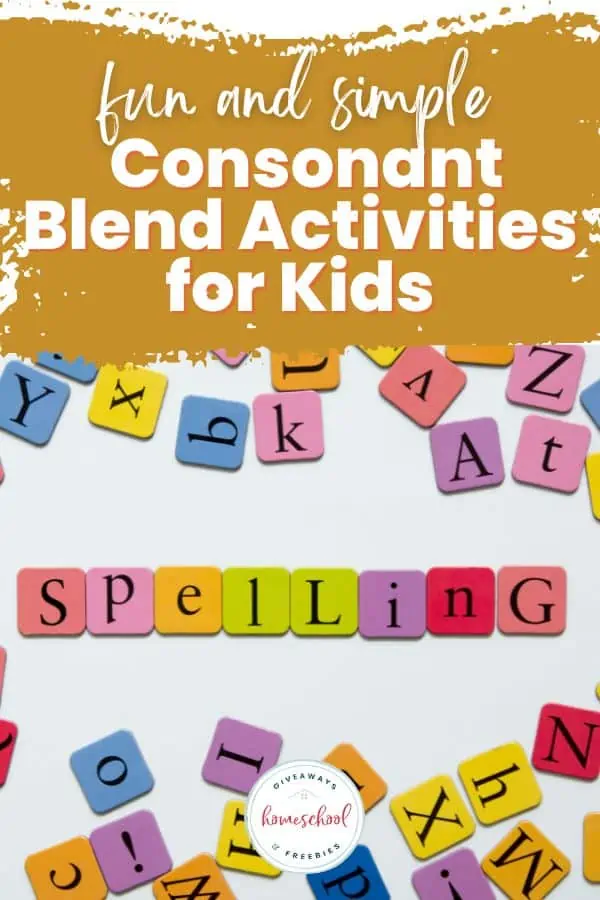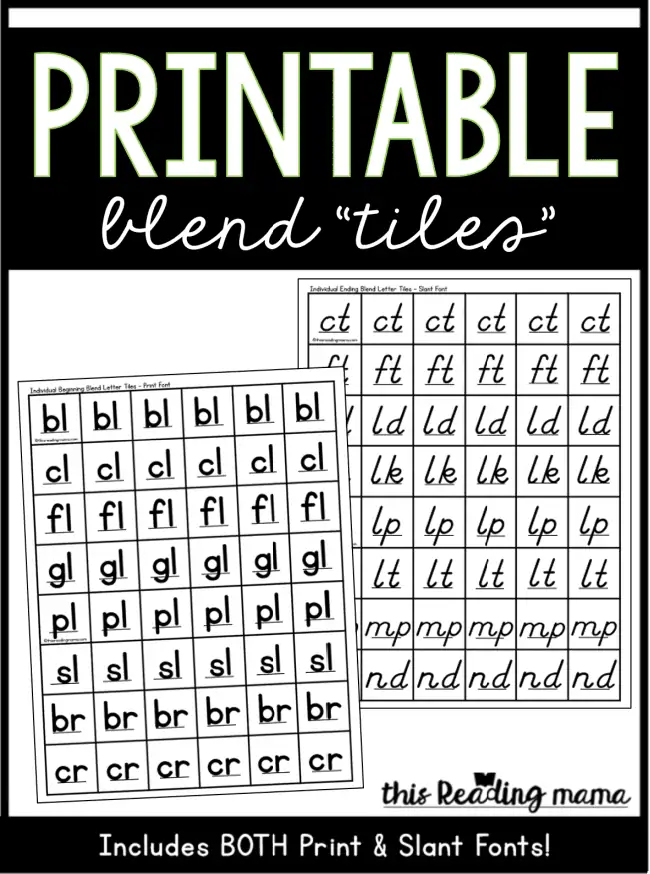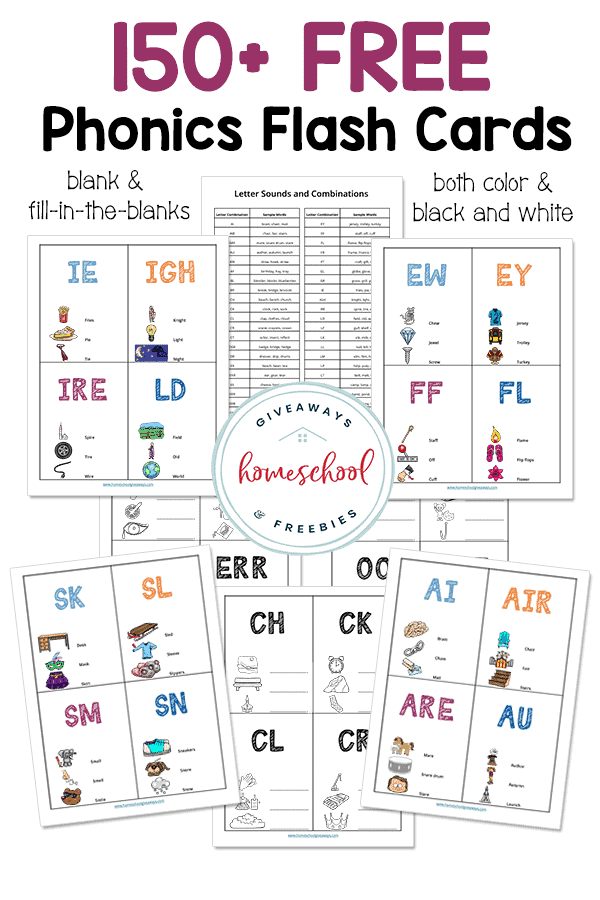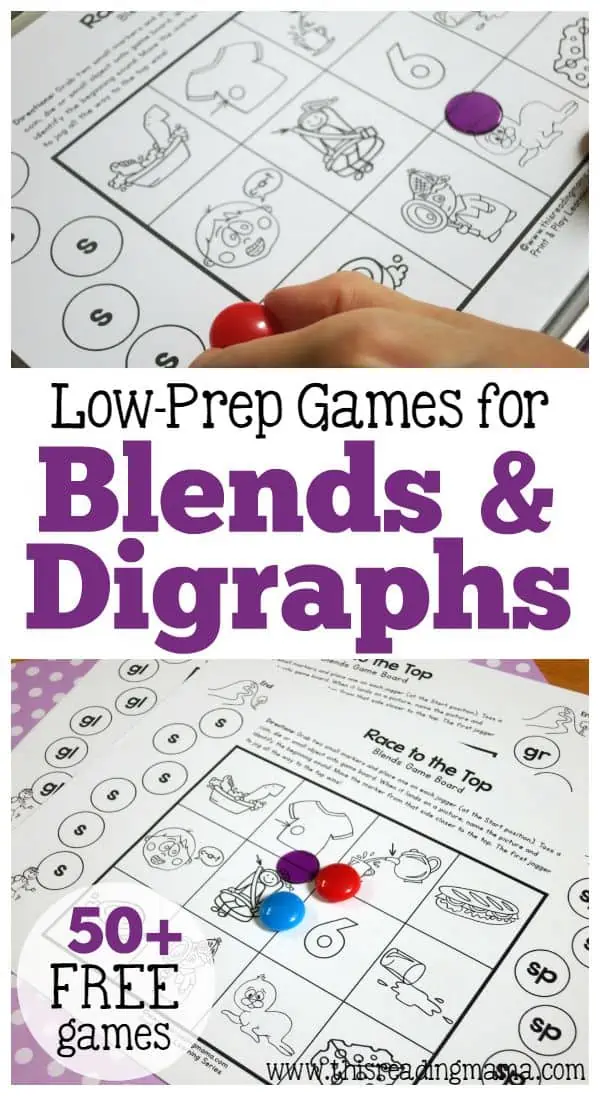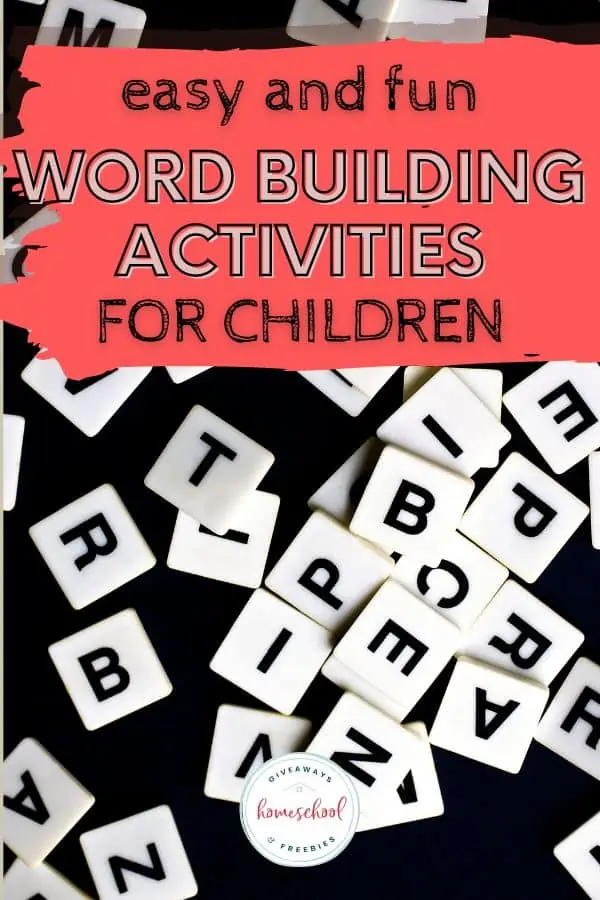Fun and Simple Consonant Blend Activities for Kids
Published:
October 24, 2022
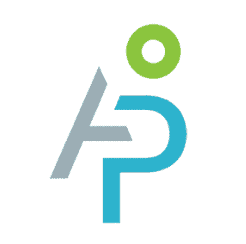
Contributor:
Alpha Omega Publications
Disclosure: This post may contain affiliate links, meaning if you decide to make a purchase via my links, I may earn a commission at no additional cost to you. See my disclosure for more info.
When your child is in the early years of learning to read, one of the key concepts that they need to grasp to become a successful reader is consonant blends. While this may sound challenging to you if you’re a first-time homeschooling mom, it’s a simple concept that you can have fun with in your homeschool. Here’s what you need to know about teaching consonant blends to your beginning reader.
Consonant Blends
Consonant blend activities will help make this crucial aspect of phonics instruction just a little bit more fun! Some kids catch on quickly. Others need a bit more practice and review. So before we jump into the hands-on ideas, let’s talk about the subject of consonant blends. What are they anyway?
What are consonant blends?
One of the top 25 preschool concepts that your child learns are the individual consonant sounds and then how to separate a short word into individual letters and recognize each distinct sound. Once this foundation is secure, the next step in growing their phonics skills is the ability to blend two or more consonants together into consonant clusters.
In other words, children usually start out learning to read CVC, or consonant-vowel-consonant, words with short vowels. This would include words such as cat, dog, pen, and win.
When you add two or more consonants at the beginning of a word or at the end of words and each of these consonants makes a distinct sound, you now have a consonant blend. For example, the words stop, plan, and wasp all have consonant blends.
How do you teach consonant blend activities?
Kids love to be hands-on when learning new concepts in phonics. Including consonant blend activities when you’re teaching your kids is a great way to help the new concept make sense. You can find word building activities to help them create beginning blends and final consonant blends.
Or you can use manipulatives, such as letter tiles, to encourage your kids to actually build the words. Engaging your kinesthetic learner is as important as keeping your visual learner interested.
How do you explain consonant blends?
Early readers already know the individual sounds of the consonants. You can explain consonant blends by sounding out each letter in a blend slowly and then blending them quicker until the word is spoken naturally.
Be sure to have your child increase their phonemic awareness by explaining how blends work rather than asking them to memorize a list of blends. You can use phonemic awareness activites to help them grasp the concept.
For example, one of the most common blends is st. Use a visual or physical letter tile to build a word with the -st blend.
You could set out four letter tiles for the word stop and have your child space each letter apart. Instruct them to put their finger on each tile and say their individual sounds.
Then, show them how to push the tiles together and blend the consonant sounds together until the word is recognizable orally. S – T – O – P becomes ST – O – P and then finally STOP.
How do you teach blends in a fun way?
When you’re teaching blends, things will stick if you have some fun. Anything that is hands-on where your child can manipulate the letters will be more fun that using a printable worksheet.
You can use letter tiles and create words with different blends and have your child point to each tile as he says the sound. Then, show him how to slide his finger under the tiles while he blends the sounds together.
Kids love multi-sensory approaches, so allowing your child to manipulate tiles will help most children. Include lots of visuals and be sure to play some of the fun games we’ll mention below.
Which blends should be taught first?
It can be tricky to figure out which blends should be taught first. Best practice seems to be teaching initial consonant blends first, but limiting your words to only four letters total.
Then, you can introduce final blends, again with short words of only four letters.
After your child is confident with both of these, you can introduce them to words with both initial and final blends. At this point you can also tackle three-letter beginning blends.
Here are some examples of each:
- initial consonant blends – sled
- final blends – nest
- both initial and final blends – spend
- three-letter beginning blends – splat
What are the 21 consonant blends?
There are 21 consonant blends that your children need to learn. The different blends should be learned organically by using them to build words rather than as a list of words to memorize.
If your children understand how to read blends, they will be able to sound out unknown words in the future with a much higher success rate.
Here are 21 of the most common blends: bl, cl, fl, gl, pl, br, cr, dr, fr, gr, pr, tr, sc, sk, sl, sm, sn, sp, st, sw, tw.
What is the difference between consonant blends and digraphs?
Yes, there is a difference between consonant blends and digraphs. Blends are two or three consonants that when blended together still make their unique sound. Consonant digraphs make one sound, even though there are two letters in the digraph.
Words with consonant blends: stop, sled, club. You can hear each distinct sound from the consonants in these words.
Words with digraphs: chop, this, ship. In each of these words, the digraph blend makes one single sound.
Consonant Blend Activities
There are some great multisensory ways to teach consonant blends. Here are some that you will want to try.
Phonemic Awareness with Visuals
Phonemic Awareness Videos – Sometimes kids learn better with visuals and videos. Here are half a dozen phonemic awareness videos to help your kids understand sound discrimination, rhyming, blending, segmenting phonemes, and more.
Tips for Teaching Phonemic Awareness – If you want some great hands-on activities to use, you’ll love the ideas here. From visuals to manipulatives, you’ll have many tools to use.
Use Letter Tiles
Word Building Games – You can play lots of word building games and activities when you have letter tiles.
You can print out your own set of reusable letter tiles or you can create them from household objects like duplo blocks, magazine pages, or classic letter magnets. Your children will learn so much just by manipulating those letters and creating simple words. Using letter tiles is a great way for them to apply the concept of consonant blends into real words.
Printable Blend Tiles
Printable Blend Tiles – Here’s a great collection of printable blend tiles to help your child build words. This pack includes beginning sound blends, blends at the end of a word, and consonant clusters.
Free Printable Blending Cards
Consonant Blends Activities: Printable Clip Cards – Here’s a simple and low-prep way to help your child practice l blends, s blends, and r blends.
Blend Words Clip Cards – Each colorful picture card includes an image and then your child clips a clothespin over the word with the correct blend.
Your child may also benefit from a phonics chart or phonics posters that have room to display blends, digraphs, and vowel sounds. Then, print off these phonics sound cards that can help you review consonant blends.
Create Word Chains
Irresistible Word Chain Games for All Ages – If you’re not quite sure what a word chain is or how it’s helpful when learning blends, this site will explain it all in detail! Plus, they give instructions for word chain games and a link to play word chain games online.
Blending: Word Chains – You’ll find dozens of printable word chains to use to help your kids work on their blends.
Play Consonant Blend Games
Consonant Blends Phonics Games – Here’s a collection of online phonics games to help your kids learn initial blends.
50+ Games for Blends and Digraphs – Yes! You’ll find over 50 printable games to help your child master consonant blends. Learning is a lot more fun when you can play a game.
Blends Activities
Free Blends Activities for Early Learners – Wow! What a huge collection for everything you’d need for consonant blend activities. You’ll find color & trace blends books, clip cards, dot marker printables plus tons more.
Word Building Activities are a fun hands-on way for your child to have practice with 2-letter blends. You’ll find links for a variety of activities including word ladders, blending phonics worksheets, cut and paste worksheets, and more.
In Summary
There are many different ways to use consonant blend activities in your phonics program to help your early readers. When they master this skill, they’ll be more successful in decoding new words as they read. Keep it fun! With some of these consonant blend activities in your homeschool toolkit, you’ll be more confident in teaching this crucial skill to your kids.

